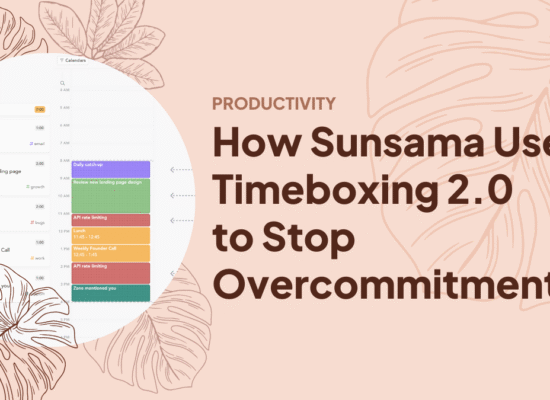Table of Contents
A thought leader is an industry expert whose opinions and insights are highly valued and trusted. They are often seen as go-to sources for advice, innovative ideas, and industry trends. Being a thought leader comes with numerous benefits, including increased visibility, enhanced credibility, and a plethora of opportunities such as speaking engagements, partnerships, and media features. Establishing yourself as a thought leader can significantly boost your personal brand and open doors to new professional opportunities.
Guest blogging is a strategic tool for building thought leadership. It allows you to reach new audiences, showcase your expertise, and establish authority in your niche. By contributing high-quality content to reputable blogs and websites, you can position yourself as a knowledgeable and trusted voice in your industry. Guest blogging helps in expanding your reach and enhances your credibility, as your insights are shared on platforms that already have an established audience.
Guest Blogging for Thought Leadership: A Step-by-Step Guide

Unique Angle
Offering a fresh perspective or unique insights can set you apart from other voices in your industry. Think about what makes your experience or viewpoint different. Maybe you have a unique methodology, innovative ideas, or a distinct storytelling style. Highlighting these aspects can make your content more engaging and memorable, helping you establish thought leadership in your niche.
Quality Over Quantity

It’s better to guest post on a few high-authority blogs than many low-quality ones. High-authority blogs have a loyal readership and are trusted sources of information. Guest posting on these platforms can significantly boost your credibility and visibility. Prioritize quality over quantity to ensure your efforts contribute meaningfully to establishing thought leadership in your niche.
Subject Line
Your subject line should be concise and attention-grabbing. It’s the first thing editors see, so make it count. A compelling subject line can make the difference between your pitch being opened or ignored.
Pitch Structure
A well-structured pitch includes a brief introduction, highlights your expertise, and suggests relevant topics. Start by introducing yourself and explaining why you’re reaching out. Then, showcase your credentials and experience.
Finally, propose a few topics that would be a good fit for the blog. This demonstrates that you’ve done your homework and are genuinely interested in contributing valuable content.
Showcase Expertise

Use data, examples, and stories to demonstrate your knowledge. Concrete evidence and real-world examples make your content more credible and relatable. Sharing personal experiences or case studies can also make your content more engaging and impactful.
Optimize for Search Engines
Incorporate relevant keywords while maintaining readability. This helps your content rank better in search engines, increasing its visibility. However, avoid keyword stuffing; your primary goal should be to provide valuable content that resonates with readers.
Be a Gracious Guest
Follow the host blog’s guidelines, meet deadlines, and respond promptly to feedback. Being professional and respectful helps build a positive relationship, increasing the likelihood of future guest posting opportunities.
Cross-Promotion
Promote your guest posts on your own channels to drive traffic to the host blog. This benefits the host blog and amplifies your reach. Cross-promotion can lead to more visibility and engagement for both parties.
Include in Your Portfolio
Showcase your guest posts on your website or LinkedIn profile. This adds to your professional portfolio and demonstrates your expertise to potential clients, partners, or employers.
Repurpose Content
Maximize the impact of your guest posts by repurposing them into other formats. Turn them into videos, infographics, or social media posts. This allows you to reach different audiences and extend the lifespan of your content.
Additional Tips for Establishing Thought Leadership

Network Actively
Building a strong network is essential for establishing thought leadership. Attend industry events, both online and offline, to meet peers and influencers in your field. Joining online communities, such as LinkedIn groups or specialized forums, can also provide valuable opportunities to connect and share insights.
Networking not only helps you stay updated on industry trends but also opens doors for collaborations and guest blogging opportunities. When you actively engage with other thought leaders, you learn from their experiences and grow your presence in your niche.
Speak at Conferences
Speaking at conferences is a powerful way to share your expertise with a wider audience and gain credibility. Look for opportunities to present at industry-specific events, webinars, or virtual summits.
When you speak at conferences, you position yourself as an authority in your field, which can lead to more guest blogging invitations and other professional opportunities. Preparing well-researched and engaging presentations can leave a lasting impression on your audience and reinforce your status as a thought leader.
Create Original Content
Publishing your own content is crucial for solidifying your authority. Regularly update your blog with insightful posts, write articles for industry publications, or produce in-depth white papers on topics relevant to your niche.
Original content showcases your knowledge and provides value to your audience, helping you stand out in the crowded digital landscape.
Additionally, having a portfolio of high-quality content can make your guest blogging pitches more compelling, as it demonstrates your expertise and commitment to content marketing.
Offer Free Resources
Sharing valuable information through free resources can attract followers and establish you as a generous and knowledgeable thought leader. Consider creating webinars, ebooks, templates, or guides that address common challenges in your industry.
Offering these resources for free helps your audience and builds trust and loyalty. When people see the value in your free offerings, they are more likely to seek out your paid services or products. This strategy complements your guest blogging efforts by providing additional touchpoints for your audience to engage with your content.
Tips for Sending Pitches for Guest Blogs

Research Target Blogs
Finding the right blogs to pitch to is crucial for guest blogging for thought leadership. Start by identifying blogs that align with your niche and target audience. Use Google search operators, such as “your niche + guest post,” to find relevant blogs.
Additionally, explore social media platforms like Twitter and LinkedIn to see where other thought leaders in your field are guest posting. This ensures that your content reaches the right audience and enhances your credibility within your niche.
Focus on Relevance and Audience
When selecting target blogs, prioritize relevance and audience alignment over sheer volume. High-authority blogs with engaged readerships are more valuable than numerous low-quality sites.
Look for blogs that cater to your specific niche and have a readership that matches your target demographic. This approach ensures that your guest posts are impactful and contribute to establishing thought leadership in your niche.

How to Craft a Compelling Pitch?
Here’s a step-by-step guide that you can follow:
- Catchy Subject Line: Your subject line should be concise and attention-grabbing. It’s the first thing an editor sees, so make it compelling. For example, “Expert Insights on Content Marketing for Your Blog” can pique interest immediately.
- Concise Introduction: Start your pitch with a brief introduction. Mention who you are, your expertise, and why you are reaching out. This sets the context and establishes your credibility from the get-go.
- Clear Value Proposition: Explain the value your post will bring to their audience. Highlight how your content will address their readers’ needs or solve a specific problem. This proves that you’ve done your homework and are genuinely interested in contributing valuable content.
Example Pitch Structure:
- Subject Line: “Boost Your Blog with Expert Tips on Content Marketing”
- Introduction: “Hi [Editor’s Name], I’m [Your Name], a content marketing specialist with over 10 years of experience. I’ve been following your blog and believe my insights could add significant value to your readers.”
- Value Proposition: “I’d love to contribute a guest post on ‘Advanced Strategies for Content Marketing’ that offers actionable insights and unique strategies to help your readers enhance their marketing efforts.”
Personalization

Personalizing your pitch is essential for standing out. Tailor your pitch to align with the host blog’s style, tone, and content preferences.
Mention specific articles you enjoyed or found useful, and explain how your proposed post complements their existing content. This demonstrates that you are familiar with their blog and genuinely interested in contributing valuable content.
Example of Personalization:
- “I particularly enjoyed your recent post on ‘SEO Best Practices for 2024.’ My proposed article on ‘Content Marketing Trends for 2024’ would be a great follow-up, providing your readers with comprehensive strategies to optimize their content marketing efforts.”
Polite and Professional Follow-Up
If you don’t receive an immediate response, it’s important to follow up politely and professionally. Wait at least a week before sending a follow-up email. Keep it concise, reminding them of your initial pitch and expressing your continued interest in contributing to their blog.
Example Follow-Up Email:
- “Hi [Editor’s Name], I hope you’re doing well. I wanted to follow up on my guest post pitch sent last week. I’m excited about the opportunity to contribute to your blog and would love to hear your thoughts. Thank you for your time and consideration.”
How to Build Relationships with Host Blogs

Engaging Actively with Content
To establish a strong relationship with host blogs, start by actively engaging with their content. This can be done by:
- Commenting on Posts: Leave thoughtful comments on their blog posts. Share your insights, ask questions, and engage in meaningful discussions. This shows your interest and demonstrates your expertise to both the blog owner and their readers.
- Sharing on Social Media: Share their content on your social media platforms, tagging the blog and adding your own thoughts. This helps in building rapport and shows that you value their work.
- Participating in Discussions: Join discussions in the blog’s comment sections or related forums. Your active participation can help you get noticed by the blog’s community and editors.
Engaging with the host blog’s content is a foundational step in guest blogging for thought leadership. It shows your genuine interest and helps you build a connection with the blog’s audience.
Networking
Networking with blog editors and other contributors can significantly enhance your guest blogging efforts. Here are some tips:
- Use Social Media: Connect with blog editors and contributors on platforms like LinkedIn and Twitter. Engage with their posts, share relevant content, and start conversations. Building a professional relationship on social media can open doors for guest blogging opportunities.
- Attend Industry Events: Participate in industry conferences, webinars, and meetups. These events provide a great opportunity to meet blog editors and other thought leaders in person. Networking at these events can lead to valuable connections and collaborations.
- Join Online Communities: Become an active member of online communities related to your niche. Platforms like Reddit, Quora, and specialized forums can help you connect with like-minded professionals and potential guest blogging partners.
Effective networking is essential for establishing thought leadership in your niche. It helps you build relationships that can lead to more guest blogging opportunities and collaborations.
Consistent Contribution

Contributing regularly to a host blog can help you build a long-term relationship and establish yourself as a reliable thought leader. Here’s why consistency matters:
- Builds Trust: Regular contributions show that you are committed and reliable. This builds trust with the blog editors and their audience.
- Increases Visibility: Frequent posts keep you in the spotlight, helping you stay top-of-mind for the blog’s readers. This increased visibility can lead to more opportunities for guest blogging and other collaborations.
- Strengthens Authority: Consistent contributions allow you to share more insights and showcase your expertise over time. This strengthens your authority and reinforces your position as a thought leader.
Ensure High-Value Contributions
To maintain a strong relationship with host blogs, ensure that your contributions consistently provide high value to their audience. Here’s how:
- Focus on Quality: Always prioritize quality over quantity. Well-researched, insightful, and actionable content will resonate more with readers and reflect positively on both you and the host blog.
- Address Audience Needs: Understand the host blog’s audience and tailor your content to address their needs and interests. Providing solutions to their problems or answering their questions can significantly enhance the value of your posts.
- Stay Relevant: Keep your content relevant to current trends and developments in your niche. This ensures that your posts are timely and useful, making them more valuable to readers.
Providing high-value content is crucial for guest blogging for thought leadership. It helps you build a positive reputation and fosters a strong, mutually beneficial relationship with the host blog.
Conclusion
Guest blogging for thought leadership is a powerful strategy for establishing yourself as an expert in your niche. By consistently producing high-quality content for reputable blogs, you can expand your reach, showcase your expertise, and build credibility within your industry.
The journey to becoming a thought leader through guest blogging involves several key steps:
- Define your area of expertise and unique perspective
- Identify and research relevant host blogs
- Craft compelling pitches that highlight your value proposition
- Create exceptional, value-driven content
- Build and nurture relationships with host blogs
- Leverage your guest posts to amplify your reach
Remember, establishing thought leadership is not an overnight process. It requires time, dedication, and consistent effort. Regularly contributing valuable insights, staying up-to-date with industry trends, and engaging with your audience are crucial for long-term success in content marketing and thought leadership.







No Comment! Be the first one.